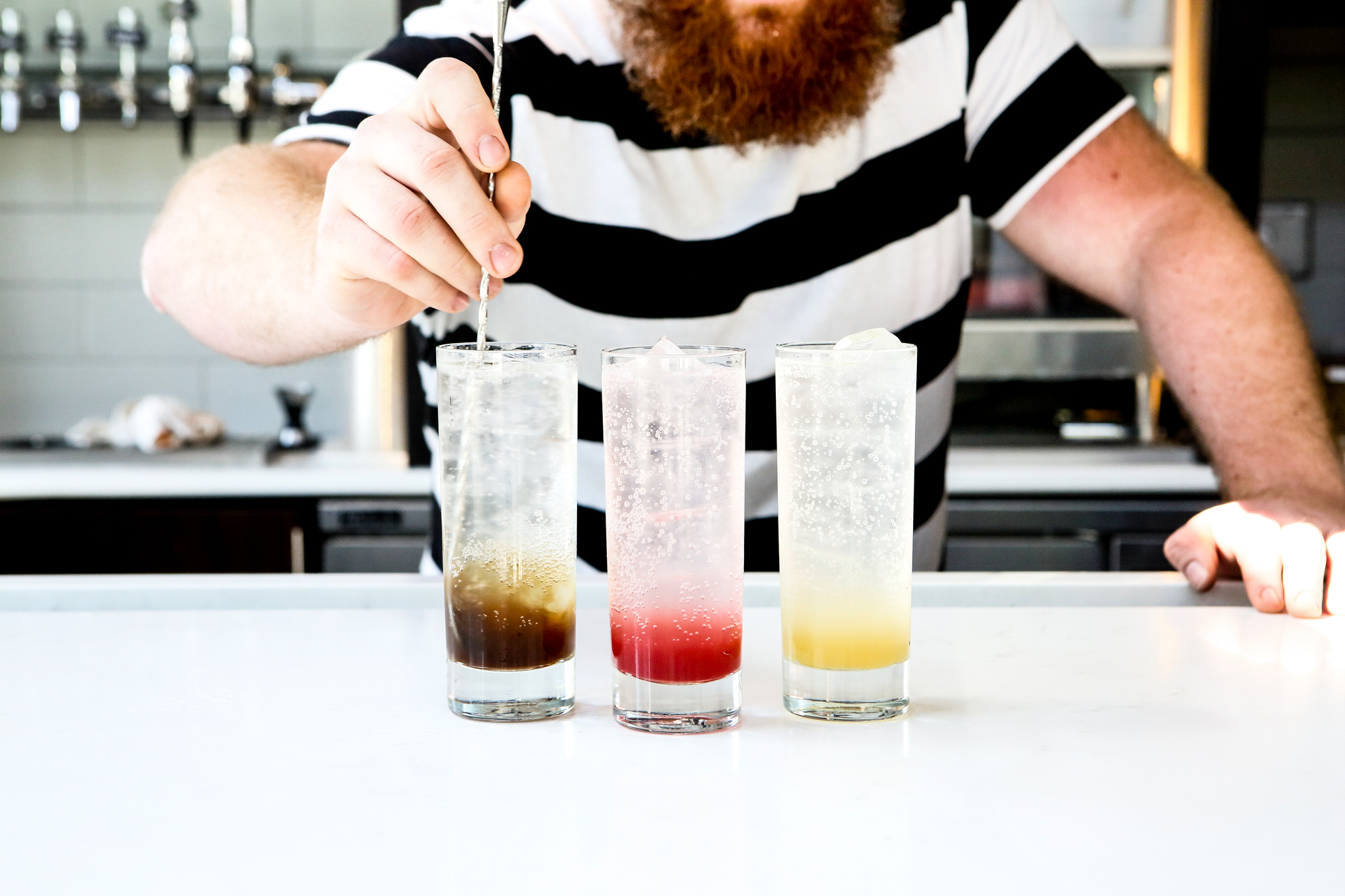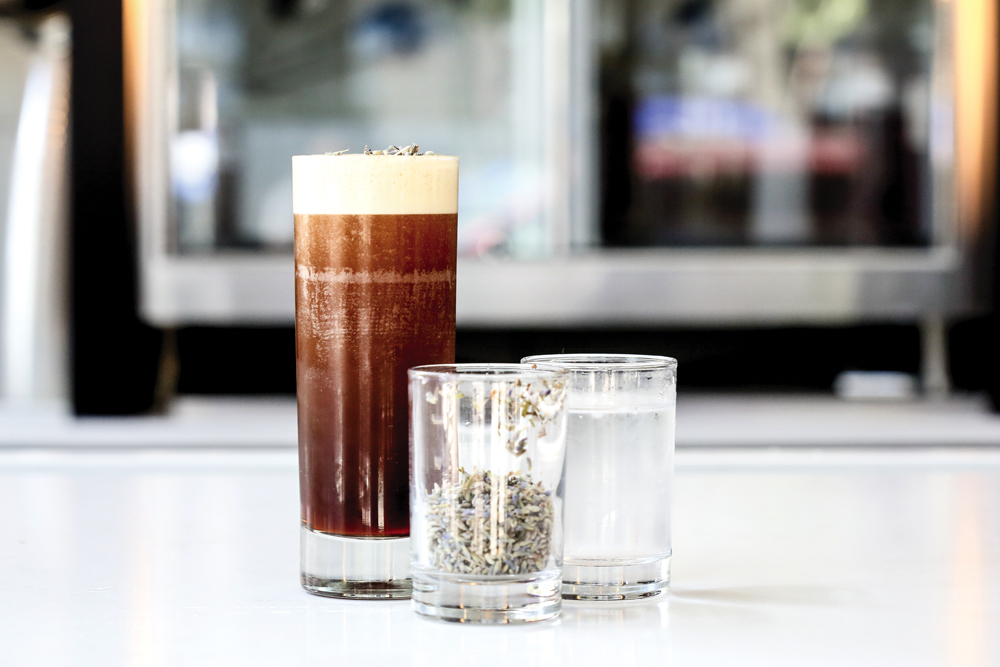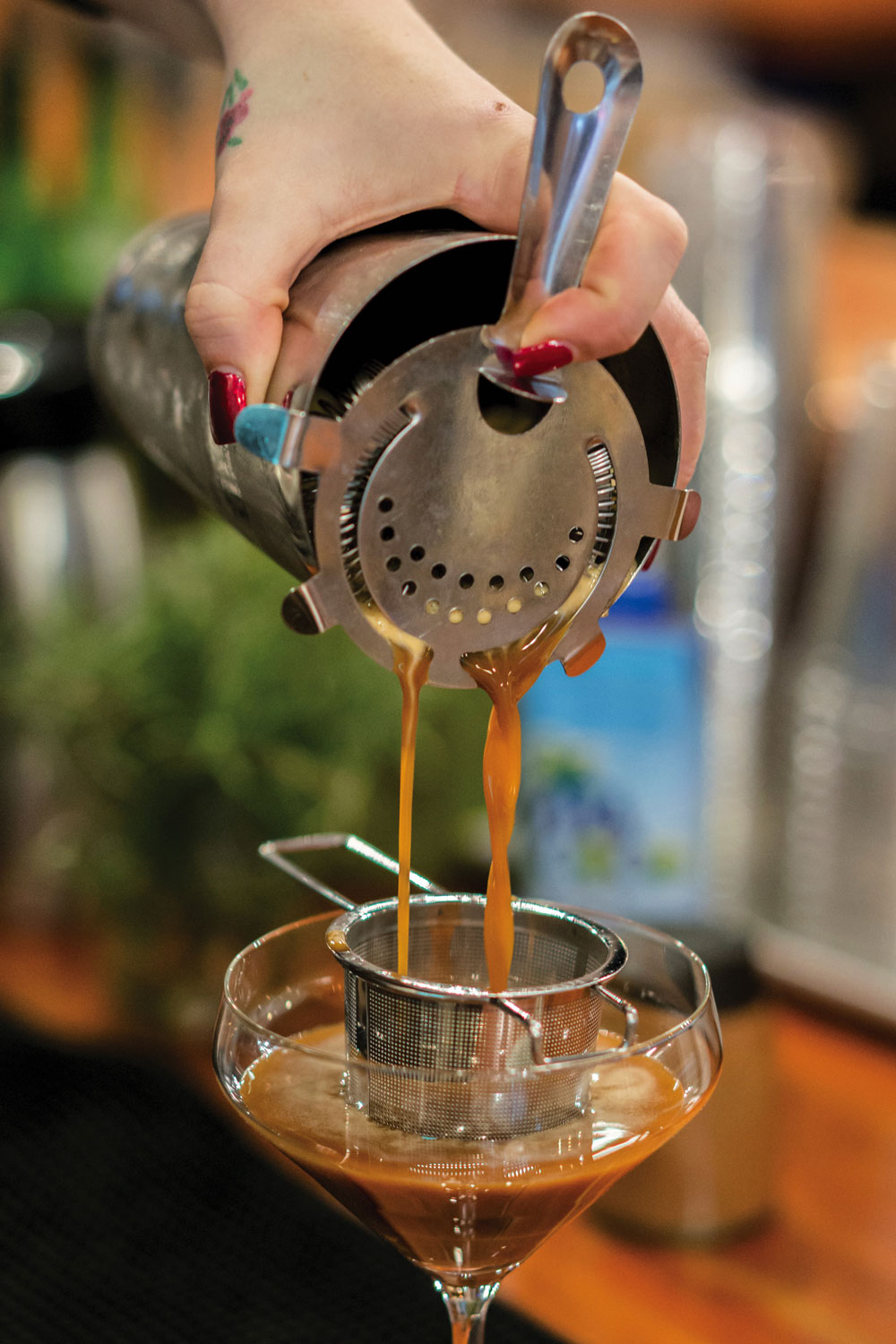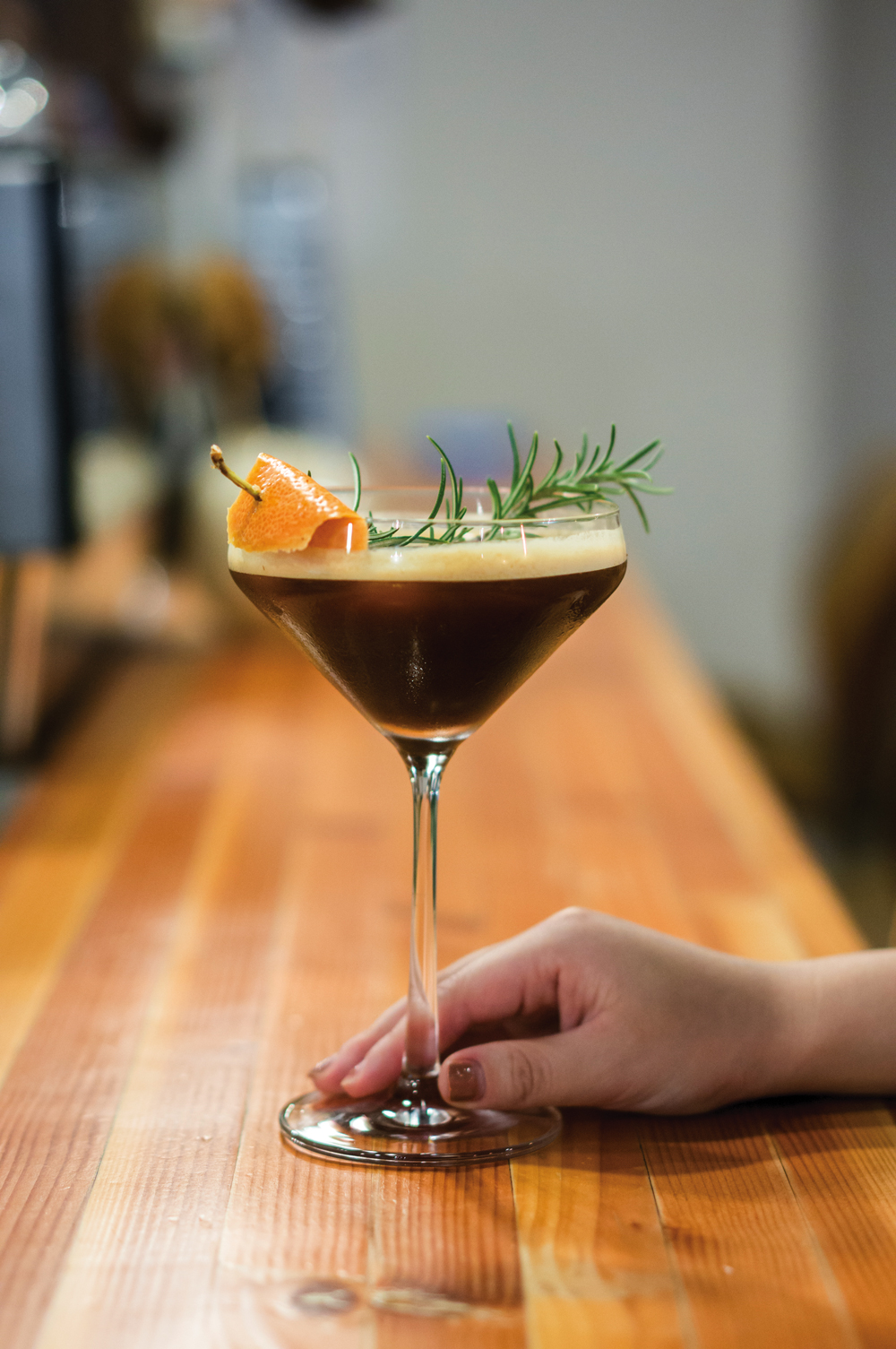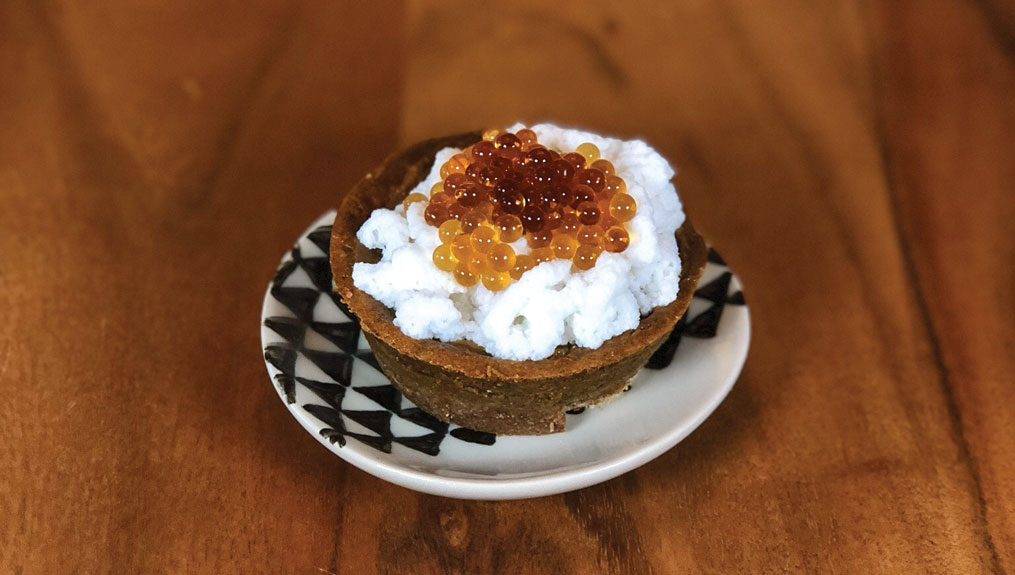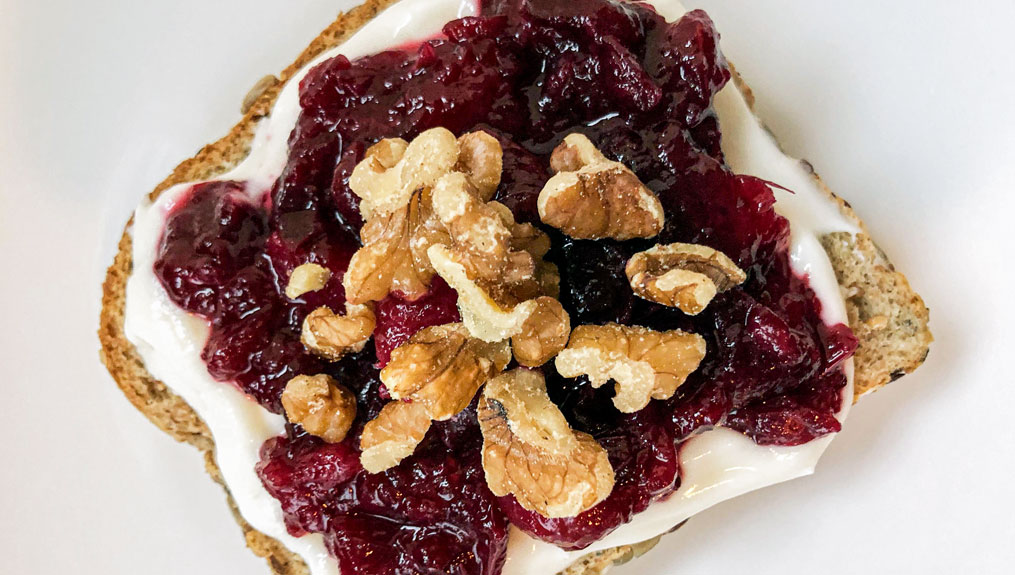At Seattle’s Ghost Note Coffee, 90 percent of the photos customers share online feature signature drinks with sparkling or tonic water. “We weren’t expecting our signature drinks to take off and define us as much as they do,” says Christos Andrews, co-owner and coffee/beverage director at Ghost Note. “Our signature drinks became, ‘Oh, this is the coffee shop that makes those crazy cocktail drinks.’”
Sparkling, fizzy, and bubbly drinks—be they beverages made with actual sparkling water or carbonated with a keg or nitro system—are incredibly popular, but they’re not always simple to make. Special equipment and ingredients are often needed, as well as an understanding of the processes behind creating sparkling drinks, whether at the foundational level of recipe creation or at a more niche level of cleaning kegerator equipment. But when planned well and incorporated into a cafe menu, sparkling drinks can capture the attention of potential customers no matter the season.
Sparkling Ahead Of The Crowd
For some shops, the complexity of sparkling drinks is part of the allure. “It’s that fun challenge of creating something that hasn’t been done before,” says Jeremy Behne, director of coffee at 42 & Lawrence, a coffee lab created by Larry’s Coffee in Raleigh, North Carolina.
Behne loves using sparkling water to complement the flavors in coffee. “We have all these great tasting notes in these great coffees, so how can you complement them without milk? The second you get a group of baristas excited about creating something like that, you’ll get things coming out of your shop that you would’ve never thought of.”
Often, rising to that creative challenge requires commitment. Ghost Note’s Andrews spent four months perfecting a drink called the Sun Ship, made with espresso, smoked grapefruit rosemary syrup, coconut water, sparkling water, and lime.
But his persistence paid off—fizzy drinks are what set Ghost Note apart from other cafes in the neighborhood. “Customers can find a good mocha or cappuccino at a million different coffee shops, but there’s only one place they can get a Sun Ship,” he says.
Sparkling Persistence
Erica Swanson, CEO and founder of Tea Bar in Portland, Oregon, is tenacious. It took her more than two years to perfect a chai recipe that became the base of her sparkling cardamom chai, made with fresh green cardamom, cloves, whole peppercorns, cinnamon, raw turbinado sugar, and organic black tea. The chai is slow-brewed for 24 hours, chilled, then combined with sparkling water.
Occasionally, a recipe doesn’t work. Swanson has tried to make sparkling matcha, which she says was “the worst,” though she’d like to figure out how to do it one day.
Recipes must not only be delicious, but they must also be scalable. “It’s so difficult to make a high-quality chai that you can also mass produce. Making something single-serving is very different than making something for three shops to sell hundreds of a week,” Swanson says.
Having the proper hardware helps. Many cafés turn to the beer industry for pointers on how to scale up sparkling and draft drinks. 42 & Lawrence has six taps that push nitrogen and carbon dioxide to produce nitro cold brew, draft lattes, coffee sodas, and more. Before opening, the owners spoke with bartenders and brewers and eventually decided to build their own nitrogenators.
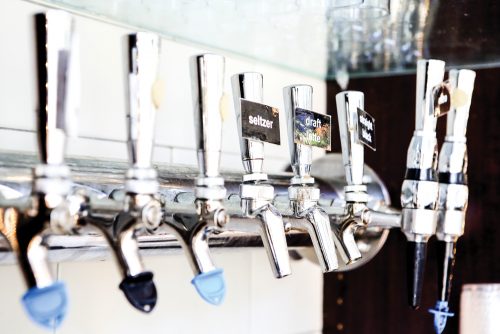
One crucial piece of advice that 42 & Lawrence learned from their research: pure carbonation can’t be added to coffee, unlike beer, as it creates too much acid.
With taps comes the critical task of keeping lines clean. “A lot of tap lines are hidden, kind of behind-the-scenes work. I can’t see what’s going on, but I have to ensure I’m keeping it as clean as the espresso machine,” says Behne.
“Just like in a brewery, you need to clean your tips and taps,” says Chris Garrison, owner of Old World Coffee in Reno, Nevada. Garrison recommends under-filling nitro kegs and then shaking them to distribute the nitrogen thoroughly for better frothing.
No Equipment Required
A café doesn’t need taps to create fizzy drinks, however. “If you have cold brew concentrate and seltzer, that’s all you need to start experimenting,” says Behne.
There are two main ways most places serve bubbly water: one that requires equipment and one that doesn’t. Ghost Note Coffee uses a vendor for sparkling and tonic water, and Tea Bar has a filtration system installed in each of their shops, which provides in-house access to carbonated water via a soda gun.
Adding sparkling drinks to a coffee and tea menu involves creativity, persistence, unique ingredients, and even new equipment. Still, there’s a tremendous upside—most people love bubbles, whether soda, kombucha, beer, cocktails, or Champagne.

Swanson points out that many people are looking for creative drinks, and bubbly concoctions fill that role: “Maybe it’s someone who usually drinks soda, but they want something with less sugar and healthier ingredients. And when it’s warmer out, people crave something super-refreshing.”
Besides giving customers something fresh and exciting, carbonated drinks allow cafés and baristas to experiment. “For so long in coffee, we’ve been dictated by the actual harvest season—you get Kenyan coffee when Kenya’s available. Coffee sodas allow us to play with seasonal ingredients that are local to us as well,” says Behne.
42 & Lawrence makes a drink called the “Redheaded Stranger,” a coffee soda with hibiscus, rosehips, and pomegranate. “It’s about crafting recipes you’re passionate about and doing something creative and amazing that your customers appreciate,” says Swanson. Recently, Ghost Note started working with a local business that makes shrubs, a flavored drinking vinegar. One of their newest drinks, the “Rivercane Tonic,” contains espresso, sweet tea syrup, peach–brown sugar shrub, peach bitters, and tonic water.
Old World Coffee offers a simple homage to a gin and tonic—the “Cafe Tonix,” made with cold brew concentrate and tonic water.
Sparkling drinks are the perfect way to surprise and delight your customers, whether a creamy draft latte, a refreshing sparkling tea, an inventive coffee soda, or a classic nitro cold brew. As Behne points out, “Everyone likes bubbles.”
This article was originally published on June 13, 2018, and has been updated to meet Fresh Cup’s current editorial standards.

